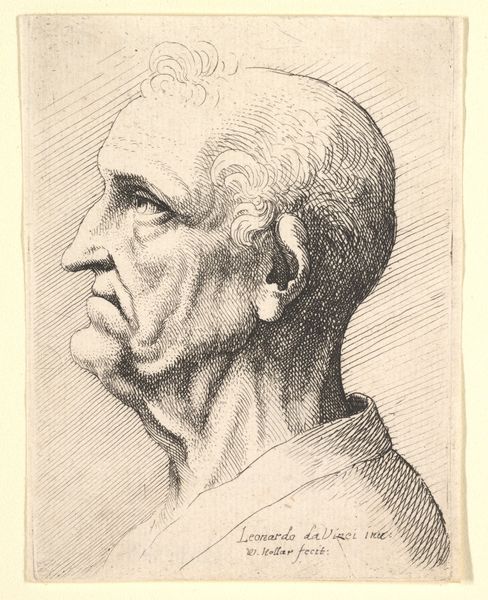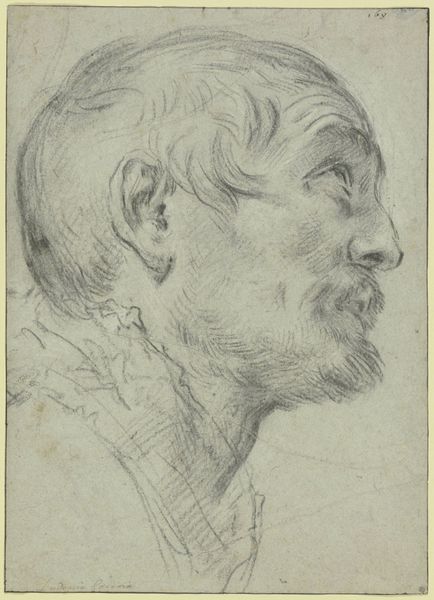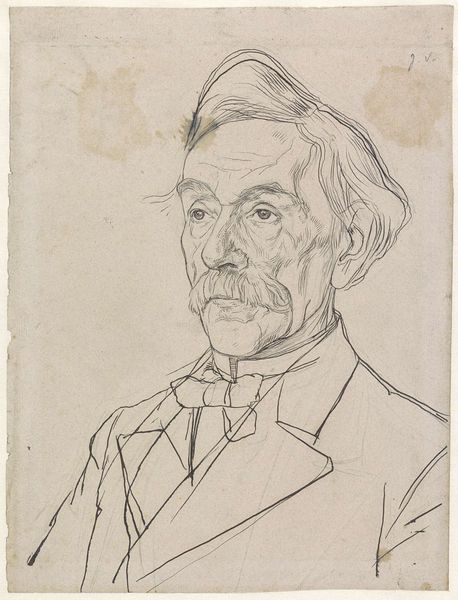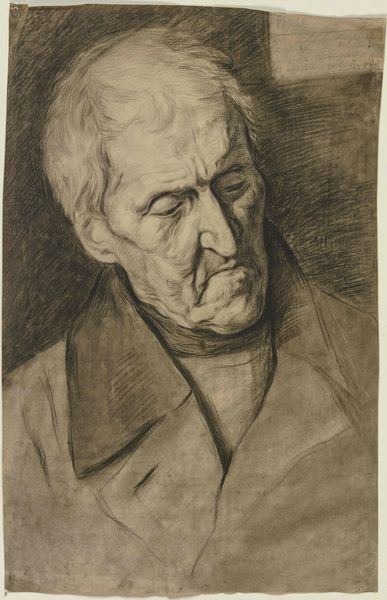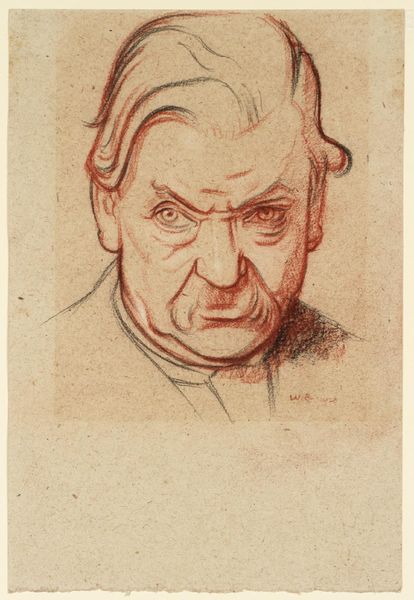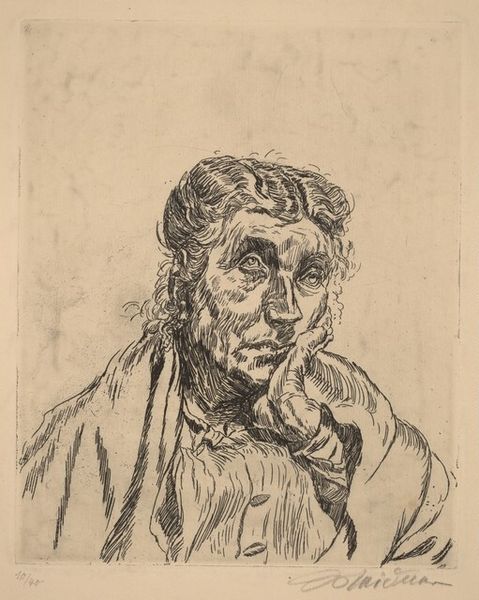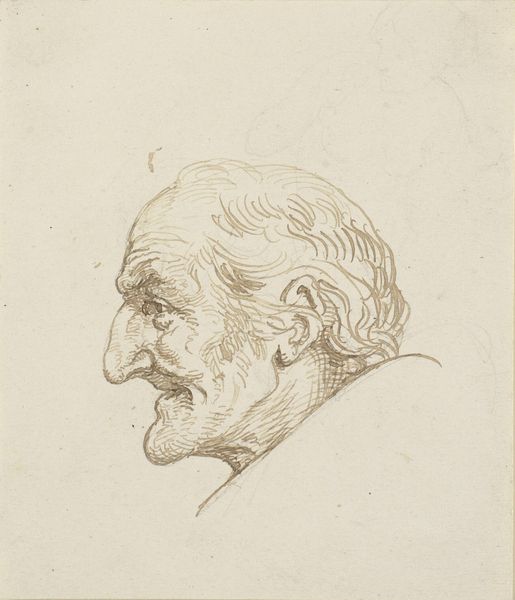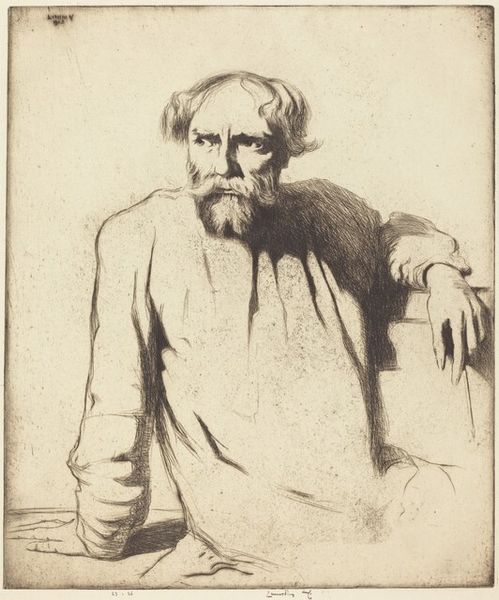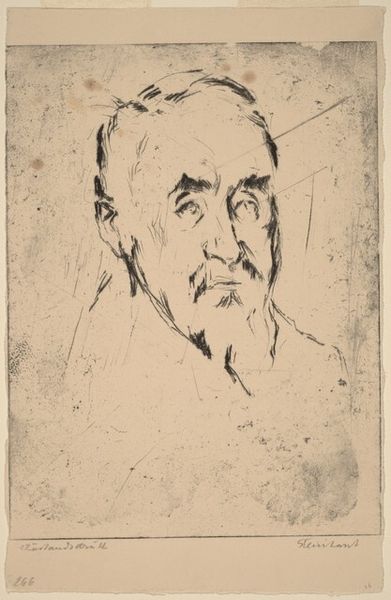
drawing, print, etching
#
portrait
#
drawing
# print
#
etching
#
pencil drawing
#
portrait drawing
#
history-painting
#
realism
Copyright: National Gallery of Art: CC0 1.0
Henryk Glicenstein made this portrait of Lincoln using etching, a printmaking process that brings a unique, tangible quality to the image. The artist would have covered a metal plate with a waxy, acid-resistant substance, then scratched the design into it with a sharp needle, exposing the metal underneath. The plate was then immersed in acid, which bit into the exposed lines, creating grooves. Ink was applied to these grooves, the surface wiped clean, and the image transferred to paper under high pressure. The resulting print bears the mark of this process: the crisp, slightly raised lines and the subtle texture of the paper itself. What interests me most is how this method, typically used for mass production, is here used to make a more individual artwork. It suggests Lincoln as a figure available to all, made visible through an accessible, repeatable technique. This piece asks us to reconsider the perceived boundaries between craft, art, and the wider social landscape.
Comments
No comments
Be the first to comment and join the conversation on the ultimate creative platform.
